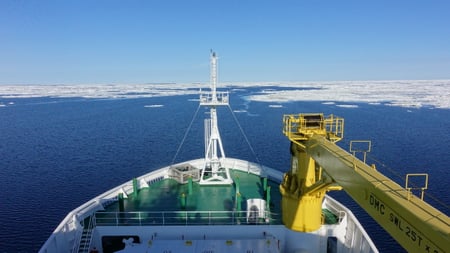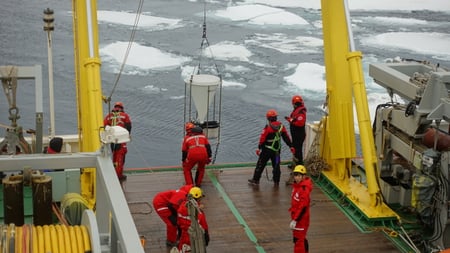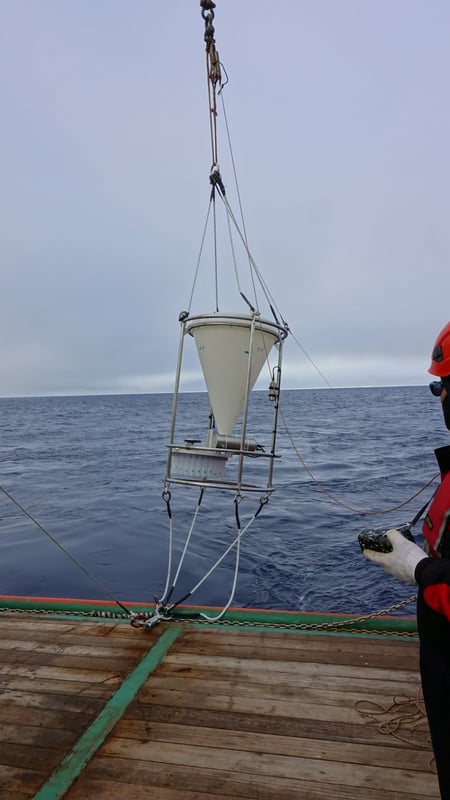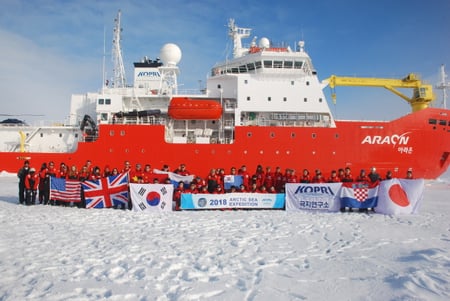In order to estimate an influence of ocean acidification in sub sea-surface waters to planktons bearing calcium carbonate shell, the subgroup of “theme 4” in ArCS project has conducted fixed point observation using bottom-tethered mooring in Pacific side of the Arctic Ocean. In this August, I joined the Arctic Ocean cruise (Leg 1) of ice breaker ARAON of Korean Polar Research Institute (KOPRI) to deploy our mooring, which had composed of sediment traps taking particles in water and some sensors to record hydrographic parameters such as pH, temperature, salinity, and ice thickness for a year.
In every summer, ARAON observes many environments from atmosphere, sea-ice, ocean to sediment mainly in the high sea area of western Chukchi Sea and East Siberian Sea, which locates in west of main ocean observation area by R/V MIRAI cruises of Japan Agency for Marine-Earth Science and Technology (JAMSTEC). The sea ice condition in August is still not preferable for deployment of long mooring. I felt the difficulty on mooring operation in ice-infested waters because I usually join MIRAI cruise for mooring operation in ice free condition for September-early October.
In this cruise, KOPRI successfully recovered time-series sediment trap samples from last summer to this August. JAMSTEC and KOPRI starts a cooperative study from this year using samples and data of sediment trap moorings to understand changing Arctic marine ecosystems. The recovered sediment trap samples will be analyzed and studied in the cooperative study which will treat the topic on ocean acidification impact to marine planktons such as pteropods and planktic foraminifer bearing carbonate shell.
From the cruise preparation to many situations during the cruise, I was helped out a lot by kind support from Dr. Eri Yoshizawa, Dr. Sung-Ho Kang and many persons in KOPRI, captain and crew of ARAON. I appreciate to Dr. Koji Shimada (Tokyo University of Marine Science and Technology) on many suggestion and advice for mooring operation in ice-infested waters. Dr. Sohiko Kameyama (Hokkaido University) was analyzing dimethyl sulfide (DMS) concentration in so many samples of sea water and ice in this cruise. He had also supported on black carbon analysis by National Institute for Environmental Studies, Japan. I expect many research results are obtained from many kinds of data and samples taken by this cruise.
Jonaotaro Onodera (JAMSTEC / a member of Theme 4)

ARAON heading to west in ice-infested waters toward the East Siberian Sea

Recovered sediment trap of KOPRI

Deploying sediment trap of JAMSTEC

Group photo just after ice camp in the northern Chukchi Plateau




